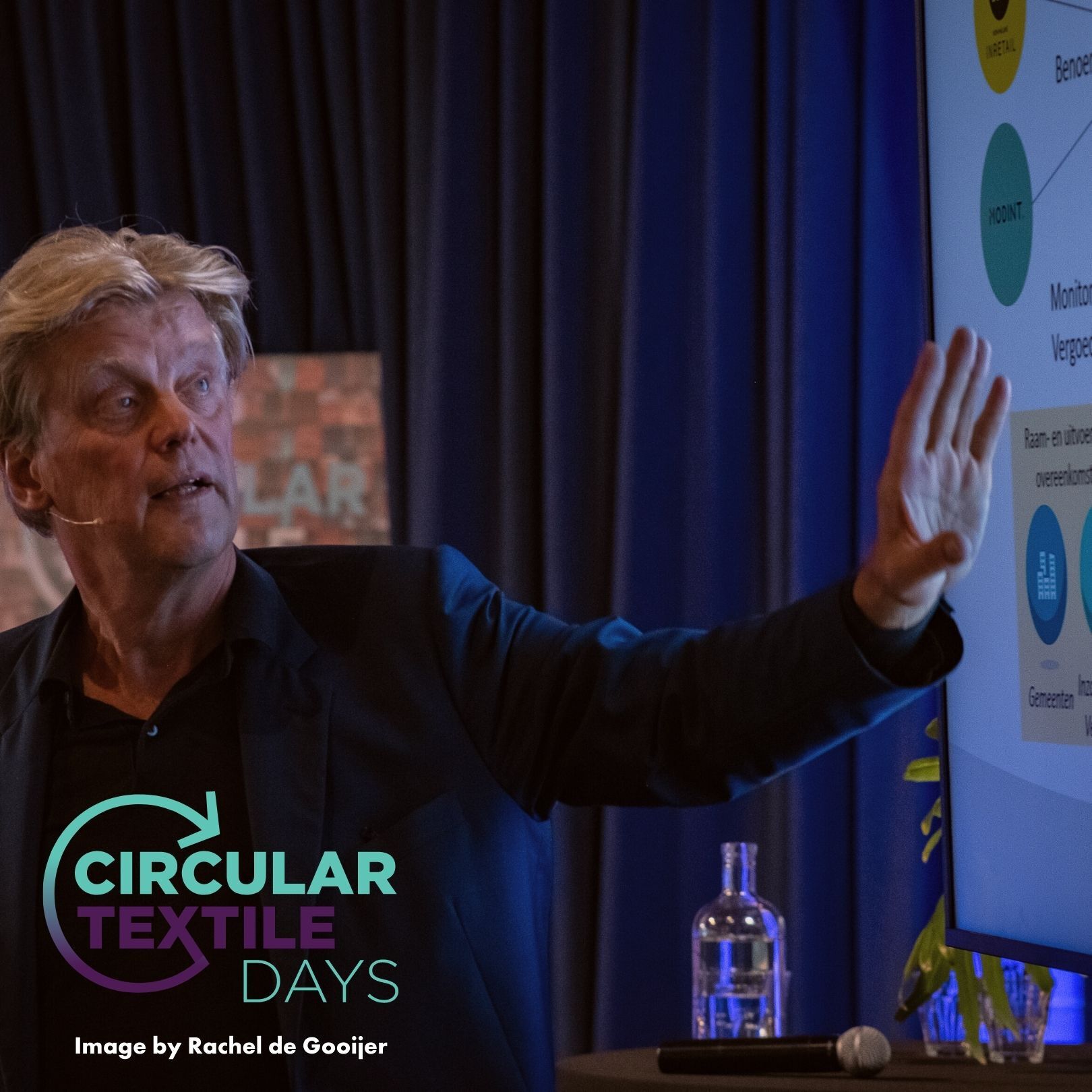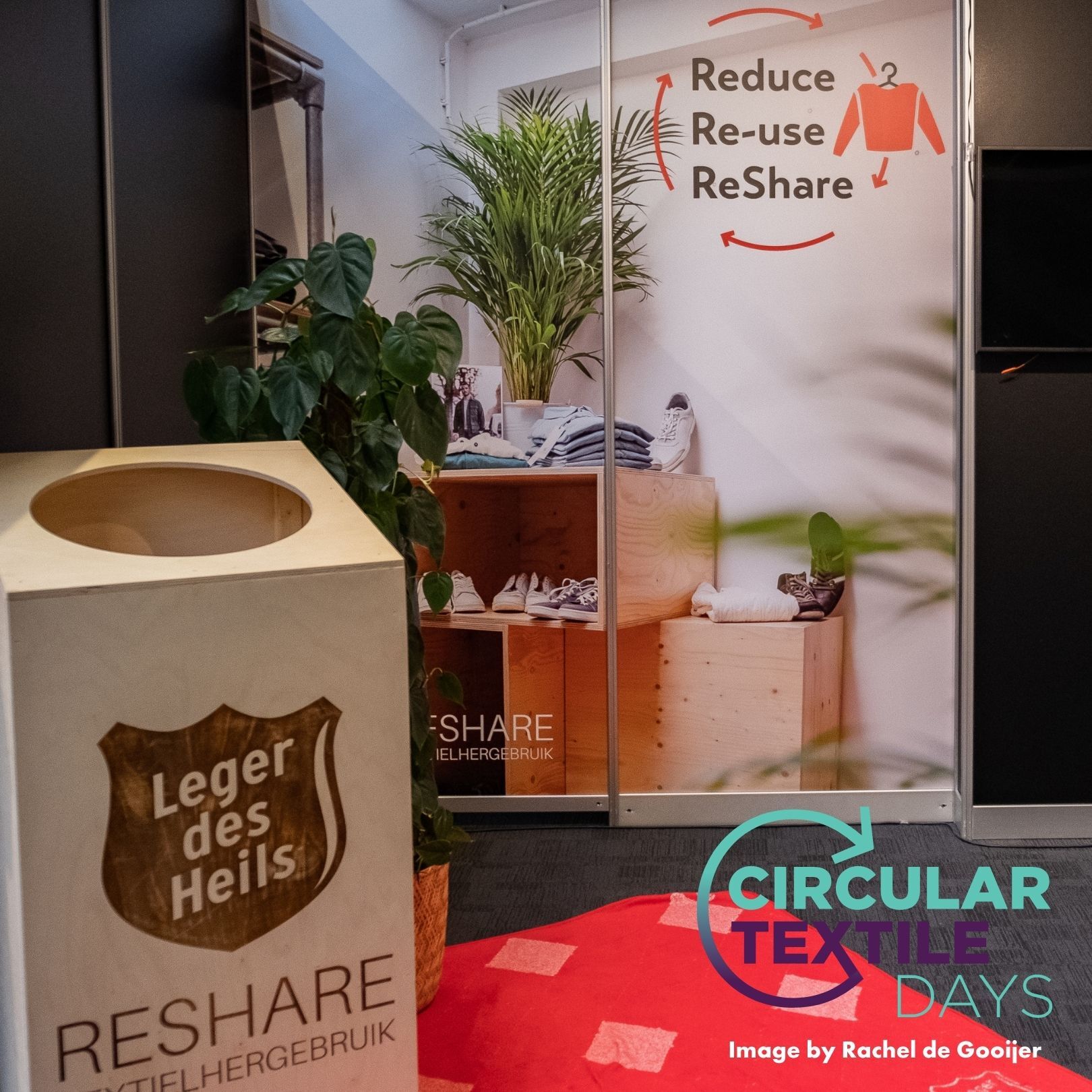
9 December 2025
Niki de Schryver from COSH!: Fast fashion harms circular goals
- Press
Dutch EPR (Extended Producer Responsibility) is taking shape. At the Circular Textile Days 2022 on 13 and 14 September in ‘s‑Hertogenbosch, an update was given on EPR going into 2023. It also highlighted initiatives that can support companies in complying with EPR. Curious about how EPR will affect your business? Read on.
On 1 January 2023, the Dutch EPR scheme will come into effect for clothing and bed, bath, table and kitchen textiles. The Netherlands will then be the second country (after France) in Europe to introduce an EPR scheme. EPR for textiles is part of the transition to a circular economy (2050) and also supports the halving of primary raw material use by 2030.
The introduction of this voluntary EPR scheme will make textile and garment producers collectively responsible for the reuse, recycling and reprocessing of used clothes and textiles.
How will this work? Producers and importers of products on the Dutch market will pay a fee per product, contributing to an innovation fund to stimulate sustainable and circular initiatives and business models. This will be done through a levy system that will affect products in the Dutch end-user market, i.e. not (re)exports. The amount of the levy will be set in different brackets depending on the average weight of the textile or item of clothing.

Peter Koppert (innovation and sustainability manager at MODINT) explained EPR’s progress during the Circular Textile Days.
Apply to the ministry in the first 6 weeks (mid-February) after it comes into force. Need help doing that? Don’t panic. Modint and INretail are setting up a producer organisation. They will be happy to help you apply and comply with the regulation.
Note: Although the EPR scheme will be formally established in January 2023, there will be a transition period for the sector organisation to set up the system. This means companies will have formal individual responsibility, but will not have to report on concrete implementation and results before 2025.
Still got questions? Check out Modint’s frequently asked questions page or see their entire EPR folder here.
It’s never too early to start taking responsibility for the life cycle of your products! Why wait for regulation and legislation when you can take action yourself.
There are several ways to do so. For example, try choosing high quality materials and timeless designs to extend the life of your products and allow customers to use them for longer. When designing, consider the clothes’ entire life cycle. Extending the life expectancy of clothes is one of EPR’s goals.

Offering repair services also contributes to this. At the Circular Textile Days, Claire Teurlings, the Head of the circular economy for textiles on the Amsterdam Economic Board, told us how in the MRA (Metropolitan Region of Amsterdam) a repair centre has been established in Amsterdam. The United Repair Centre is a collaboration between clothing brands, consultancies, government agencies, NGOs and educational institutions that aim to make repairing clothing the new norm. By working together, there is greater support to make repairs happen. It is also more cost-efficient and accessible to consumers than if each retailer had their own repair centre.
Claire Teurlings: “This community approach is a different way of approaching circularity. And we would like to expand it even further through collaborations with other Dutch and European regions.”

You can also collect worn clothes in your own shop and give them a second life by selling them in a second-hand section or by upcycling them.
Another option is to work with collection and recycling partners such as ReShare, Wereld Missie Hulp or Wolkat’s company Drop & Loop. This company has developed plug-and-play collection systems that you can place in your shop. Kimberley van der Wal, Business Developer at Wolkat Group, explained the concept during Circular Textile Days. “First, reusable and non-reusable materials are separated. Then the reusable products are resold and the non-reusable products are separated (manually) by colour and type of fibre and mechanically recycled (shredded, spun, woven), without the use of chemicals or dyes. From these recycled fabrics, new products are made: home and kitchen textiles, accessories and fashion accessories. And all under one roof in Morocco.”
Are you ready to help build the circular textile sector of 2050? Then make sure you join the Dutch EPR scheme! The following articles might also be of interest to you:
How can we extend producer responsibility? Lessons from CTD 2021
Working together for the circular economy: the state of Dutch EPR
Want to know more about the Circular Textile Days? This event brought companies from the circular textile sector together, including COSH, thanks to the EU S4Fashion* accelerator.
*With the contribution of the EISMEA Programme of the European Union.